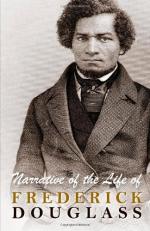|
This section contains 544 words (approx. 2 pages at 400 words per page) |

|
Imagery
One of the most convincing devices that Douglass utilizes in the Narrative is animal imagery. Such imagery reveals the dehumanizing effects of slavery in both slaveholders and slaves, especially in the rural context of the plantation system, where slaves were chattel, similar to domesticated animals. These images include similes (such as describing the young children feeding at a trough as being "like so many pigs") and association (as in chapter eight, when Douglass describes the slaves' experience at the valuation as being ' 'on the same rank in scale" of "horses, sheep and swine"). Douglass makes it clear that slaves were not only viewed as being animals, but they also lived in conditions that reinforced that stereotype. However, Douglass, in a clever move, uses animal metaphor to suggest that slave owners were not exempt from being perceived as animals by slaves themselves. For example, Mr. Covey is known...
|
This section contains 544 words (approx. 2 pages at 400 words per page) |

|




